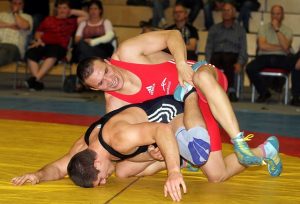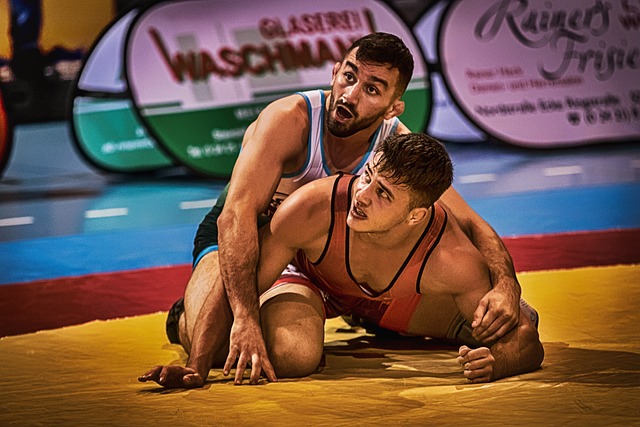A distinct kind of entertainment, professional wrestling mixes narrative, theatricality, and athleticism to enthrall viewers around. Beyond the sport’s physicality, there is a nuanced psychological component that influences the story and draws spectators in. In order to shed light on the mental games that take place both inside and outside of the ring, this essay will explore the complexities of wrestling psychology.
The Holding Back of Belief
Suspension of disbelief is one of the core ideas of professional wrestling. This idea, which is taken from theater and movies, speaks to the audience’s capacity to accept the performance’s staged nature and lose themselves in the narrative. Promoters and wrestlers put up a lot of effort to conflate fact and fiction, developing likable characters with interesting rivalries and backstories.
Persona and Character Development
The development and presentation of engrossing characters is at the heart of wrestling psychology. For optimum effect, these personalities are sometimes enlarged, exaggerated representations of the performers. A character’s capacity to elicit strong feelings from the audience, be relatable, and be distinctive are all critical to its success.

For instance, a compelling “face” (good man) may often exhibit traits like bravery, honor, and tenacity, while a “heel” (bad guy) may have traits like haughtiness, dishonesty, and brutality. The audience’s emotional involvement is fueled by the interactions between these archetypes.
Creating Tension and Anticipation
In professional wrestling, psychological warfare is not limited to the ring. Equally important to the action in the ring is the build-up to a bout. Wrestlers use promos, interviews, and backstage areas as forums for verbal sparring, sowing the seeds of a fight that will eventually break out in the ring.
A well-done promo can build a great deal of excitement for a bout because it gives the wrestlers a chance to explain their reasons, develop their personas, and establish a rapport with the fans. These exchanges play a crucial role in creating the mental strain that will erupt when the fighters ultimately go into the ring.
The Craft of Narrative
Wrestling is fundamentally a narrative medium. The matches themselves are physical stories with plots that are advanced by each move, countermove, and reversal. A wrestler’s ability to tell a tale and their grasp of rhythm, timing, and the ebb and flow of a bout are essential.
The psychology of wrestling entails staging intense dramatic scenes that send the audience on an emotional roller coaster. These parts, which range from the thrilling near-falls to the victorious comebacks, are expertly planned to evoke an emotional reaction in the audience.
The Value of Belief
Wrestling is a team sport that demands a great deal of trust between participants. Even seemingly cruel and risky moves are often well rehearsed to guarantee safety. Since wrestlers must depend on their opponents to perform movements properly and keep each other safe, there is a significant psychological component to this trust.
This trust goes beyond the on-field interaction. Wrestlers have to have faith in their opponents to carry out their parts well, to sell the tale, and to create an engaging plot that draws in viewers.
Getting Used to the Crowd
A significant factor in the psychology of wrestling is the live crowd. A great wrestler has to be able to read the crowd’s emotions and modify their style of play appropriately. Knowing the audience’s pulse enables wrestlers to influence the narrative flow of the bout and manage emotions, whether it’s embracing applause or provoking boos.

The Influence of Nonverbal Expression
Much of the psychological interaction in wrestling happens via nonverbal cues, even if interviews and promos are essential for developing character motives. The story is influenced by body language, facial emotions, and even the timing of a wrestler’s moves.
An audience may be infuriated by a heel’s well-timed sneer, for example, or encouraged by a face’s resolute look. One quality that separates excellent wrestlers from great ones is their capacity to express feelings without using words.
The Intricacy of Heel-Face Motion
In wrestling, the tale must progress via the differentiation between the hero (face) and evil (heel). The distinctions between these positions are often hazy, however, and competent wrestlers are aware of the subtleties of this relationship.
Due to the need for an audience perspective change, a wrestler’s “face turn” or “heel turn” may be a turning point in their career. This shift requires a thorough comprehension of character psychology as well as the capacity to negotiate the nuances of fan allegiance.
The Outside of the Ring Mind Games
Beyond the staged altercations in the ring, wrestling encompasses a psychologically complex backstage culture. In the world of wrestling, negotiating contracts, creating alliances, and competing for opportunities all call on a keen grasp of human psychology.
Rivals and backstage politics may be equally as heated as those that occur in the ring. In order to further their careers, wrestlers must negotiate these dynamics by building alliances and taking strategic risks.
The Mentality of Mandatory Partnerships
An additional level of psychological complexity is introduced by stipulated bouts, in which certain guidelines or requirements are imposed before a fight. These restrictions, which range from Hell in a Cell to “I Quit” bouts, change the nature of the contest and force wrestlers to modify their approach.
A wrestler’s ability to use the rules to their benefit—whether it’s by taking advantage of a vulnerability or making the most of the surroundings to do maximum damage—is evidence of their mastery of the psychological component of the sport.
The Extended Storyline
The art of wrestling involves creating lengthy narrative arcs that might last months or even years, in addition to individual bouts. In order to tell a coherent story, wrestlers need to have a strong sense of continuity, recalling previous rivalries, alliances, and conflicts.
Character development and audience engagement are two concepts that must be well understood in order to sustain an engaging tale for a prolonged amount of time. It’s similar to writing a drama series in which every match advances the story.
The Significance of Mental Toughness and Resilience
In the realm of professional wrestling, the quality of resilience is essential. Because of the constant physical demands and risk of injury, mental toughness is equally as crucial as physical ability. Wrestlers must overcome suffering, tiredness, and sometimes even disappointment while remaining devoted to their roles and the plot lines.
These athletes’ mental toughness is evident in their capacity to overcome hardship and provide an amazing performance. This facet of wrestling psychology highlights the extraordinary commitment and perseverance needed to succeed in the sport.
The Skill of Controlling Acceleration
A match’s ebb and flow may be controlled with a subtle psychological dance. Wrestlers need to be aware of the flow of the match and know when to take the initiative and when to back down. As they experience the highs and lows of the match on an emotional level, this dynamic keeps the audience interested and involved.
A well-run bout narrates a tale of wrestlers fighting for control and momentum swings. The psychology is in understanding when to grab the initiative and when to give the opposition the upper hand, which results in an engaging story line.
Fan Engagement: The Heartbeat of Wrestling
One particular facet of wrestling psychology is the relationship between wrestlers and viewers. Wrestling dissolves the boundaries between the performer and the audience, in contrast to many other sports and entertainment genres. The crowd’s instantaneous and significant responses influence the match’s course in real time.
Competent wrestlers are able to sense the enthusiasm of the audience and react accordingly. They might use applause to bolster their act or jeers to stoke further hostility. Every match gains an extra element of excitement and unpredictability from this dynamic interaction between the crowd and the artists.

The Subversion and Surprise Technique
Shrewd spectator awareness is an essential component of wrestling psychology. A story’s unexpected turns, unexpected comebacks, or stunning betrayals may astound the audience. These shocks are deliberately used by wrestlers and promoters to make the story interesting and unpredictable.
A thorough awareness of the audience’s expectations as well as a willingness to take chances are necessary for expectations to be subverted. These shocks have the potential to become famous moments in wrestling history if they are carried out well.
Wrestling Psychology’s Legacy
Wrestling psychology is a complex fabric interwoven with drama, human emotion, and athleticism. It’s evidence of the actors’ imagination and commitment to making these tales come to life. Understanding the depth of the psychological dynamics of professional wrestling contributes to audiences’ growing respect for this distinctive type of entertainment.
In summary
Wrestling psychology is a complex fabric that combines narrative, theatrics, and athleticism. It calls for a profound comprehension of audience participation, trust, and character development. In order to give their fans an experience they won’t soon forget, wrestlers are artists who have mastered the art of psychological manipulation. Understanding the complex mind games at play gives a new level of appreciation for this compelling type of entertainment as we watch professional wrestling continue to evolve.
